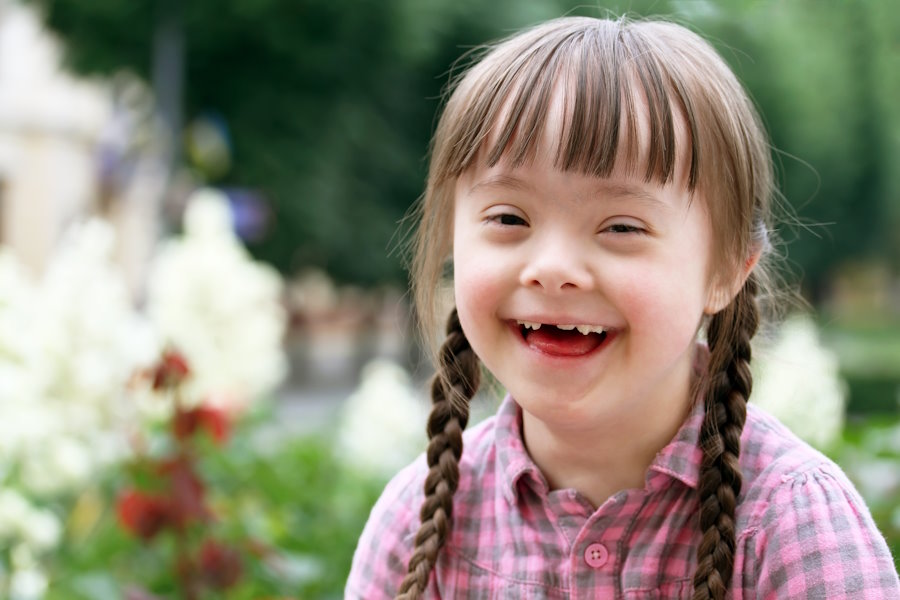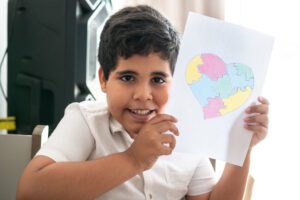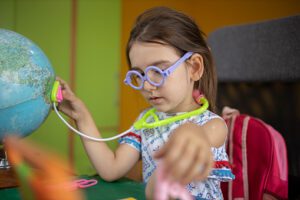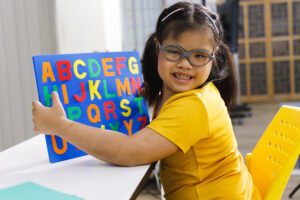Serbia
Adopting from Serbia
Hopscotch Adoptions’ Official Letter of Accreditation from Serbia’s Ministry of Family Care and Demography (PDF) Hopscotch Adoptions, Inc. is pleased to announce the Serbian Ministry of Family Care and Demography (MFCD) Adoption Authority has re-accredited Hopscotch Adoptions, Inc. to provide adoption services for US families seeking to adopt a Serbian child. Hopscotch has worked in Serbia since 2014 and assisted 30 Serbian children into their permanent families through the end of 2022.Eligible Children
There are currently more than 500 families in Serbia waiting to adopt healthy children domestically. For this reason, the only children eligible for international adoption from Serbia are those with physical and/or developmental disabilities, keeping the number of Serbian children cleared for intercountry adoption quite small. The needs of the children range from Down syndrome, cerebral palsy, non-correctable limb differences and autism spectrum disorder to FAS, ADHD, spina bifida and global developmental delays. From time to time, older children, or sibling groups with mild developmental or institutional delays are cleared for international adoption. Some diagnoses categorized as “severe” in Serbia may be quite manageable in the U.S., in part due to advanced medical and educational services available here. With the exception of sibling groups, families may only adopt one child at a time from Serbia. Serbia requires one year between adoptions of non-related children.
Eligible Applicants
 Serbia requires that parents not be more than 45 years older than the child they are adopting, with a minimum age difference of at least 18 years. Parents must be married, and common-law marriages can qualify. Single parents are approved on a case-by-case basis. If you are single, you must document and explain to the Serbian Ministry of Family Care and Demography Adoption Unit how you will care for a child with special needs as a single parent, as well as the support system you have in place.
Serbia requires that parents not be more than 45 years older than the child they are adopting, with a minimum age difference of at least 18 years. Parents must be married, and common-law marriages can qualify. Single parents are approved on a case-by-case basis. If you are single, you must document and explain to the Serbian Ministry of Family Care and Demography Adoption Unit how you will care for a child with special needs as a single parent, as well as the support system you have in place.
Adoptive parents with mental health diagnoses or infectious disease are prohibited from adopting a child from Serbia.
Families are not encouraged to submit a dossier to Serbia unless they are committing to an identified waiting child, deemed eligible by the MFCD.
Program & Process
Contact Hopscotch Adoptions, Inc., so we can assist you in developing a basic letter of introduction to the Ministry of Family Care and Demography Adoption Unit. The contents of this letter will introduce yourself and your family, describing the type of child you wish to adopt along with a check list of diagnoses that you would or would not accept based on what child would best fit into your family. There is no commitment or expense attached to this required first step before previewing a waiting child’s file.
 Upon receipt of your letter, MFCD will acknowledge your inquiry and offer a preliminary approval for your family to view the file of any Serbian child meeting your stated preferred parameters. If the child you hope to pursue has already been made known to Hopscotch, we will share all information provided to us with you at this time. Alternately, the MFCD may send information about another child which we will present to you, or they may let us know that while you have preliminary approval, currently no children meeting your criteria are cleared for international adoption.
Upon receipt of your letter, MFCD will acknowledge your inquiry and offer a preliminary approval for your family to view the file of any Serbian child meeting your stated preferred parameters. If the child you hope to pursue has already been made known to Hopscotch, we will share all information provided to us with you at this time. Alternately, the MFCD may send information about another child which we will present to you, or they may let us know that while you have preliminary approval, currently no children meeting your criteria are cleared for international adoption.
You may ask MFCD further questions on a child suggested for you to help you make a decision. Please be patient with this process. Upon receipt of questions, the MFCD Adoption Unit must contact the social center responsible for the child in whom you are interested. If the child is housed in a facility far from the capital, it may take several weeks to respond to the questions. It is possible you will not receive a picture of the child before you travel. Serbia is extremely protective of the privacy rights of its children. There is no tolerance for violating a child’s privacy. If the MFCD Adoption Unit does provide you with a photo of the child referred, you may not post it anywhere online or share in emails. Hopscotch Adoptions strongly encourages families to seek out the services of an Independent Adoption Specialist to help discern what the child’s/children’s needs are and if your family is appropriate for the adoption of any of these children.
 If a family wishes to move forward with the adoption of a Serbian child after careful consideration, the family will compile and submit a complete dossier for review by Hopscotch, followed by sending it to Serbia for translation, certification, and submission to the MFCD Adoption Unit. Dossier approval is followed by the issuance of the child’s Article 16 packet and the remaining steps to be completed with the US government. After the provisional approval from USCIS is issued, you’ll also receive case invoice and receipt numbers from the National Visa Center (NVC). Those numbers should be forwarded to Hopscotch’s office and upon receipt; Hopscotch will file your DS-260 online. Once this is done, NVC generates a certificate which is also transmitted to the US Embassy in Belgrade, Serbia. This will alert the embassy that an appointment request is forth coming. When the Article 5 Letter is ready at the US Embassy in Belgrade, MFCD will issue an invitation to Serbia for your family. Hopscotch will coordinate an appointment date with the MFCD and the US Embassy. These dates will dictate your arrival and departure travel dates once confirmed.
If a family wishes to move forward with the adoption of a Serbian child after careful consideration, the family will compile and submit a complete dossier for review by Hopscotch, followed by sending it to Serbia for translation, certification, and submission to the MFCD Adoption Unit. Dossier approval is followed by the issuance of the child’s Article 16 packet and the remaining steps to be completed with the US government. After the provisional approval from USCIS is issued, you’ll also receive case invoice and receipt numbers from the National Visa Center (NVC). Those numbers should be forwarded to Hopscotch’s office and upon receipt; Hopscotch will file your DS-260 online. Once this is done, NVC generates a certificate which is also transmitted to the US Embassy in Belgrade, Serbia. This will alert the embassy that an appointment request is forth coming. When the Article 5 Letter is ready at the US Embassy in Belgrade, MFCD will issue an invitation to Serbia for your family. Hopscotch will coordinate an appointment date with the MFCD and the US Embassy. These dates will dictate your arrival and departure travel dates once confirmed.
The MFCD Adoption Unit works with families on establishing specific travel dates that work for your family, however, they expect any family that has received a referral to travel within a few weeks of notice or sooner upon the first available calendar opening they have. Please be advised that MFCD has capacity only to invite one US family per month to finalize an adoption. Therefore, families submitting their dossier at a time where many others are in process also may have to wait a few months to be invited, despite all paperwork being ready.
If married, both parents are required to travel and can expect to be in Serbia for about 23 days from the date of the MFCD’s appointment.
 Upon arrival in Serbia, the first business day’s task is to attend a meeting at the US Embassy in Belgrade to personally receive your Article 5 letter. The following day you will attend a meeting with the MFCD Adoption Unit. The latter meeting is informal, and families are encouraged to relax. The MFCD Adoption Unit has already deemed you to be an appropriate family for the child and welcomes you. During this meeting you’ll review the child’s medical and social file in detail. In attendance at this meeting, there will be members of the MFCD Adoption Unit, the child’s legal guardian, social worker, doctor, and psychologist. If the child is in institutional care, a representative from the institution will be present as well. If the child is residing in foster care, the foster parents are permitted to attend. You will learn the circumstances that resulted in the child’s relinquishment as well his or her current medical and developmental status.
Upon arrival in Serbia, the first business day’s task is to attend a meeting at the US Embassy in Belgrade to personally receive your Article 5 letter. The following day you will attend a meeting with the MFCD Adoption Unit. The latter meeting is informal, and families are encouraged to relax. The MFCD Adoption Unit has already deemed you to be an appropriate family for the child and welcomes you. During this meeting you’ll review the child’s medical and social file in detail. In attendance at this meeting, there will be members of the MFCD Adoption Unit, the child’s legal guardian, social worker, doctor, and psychologist. If the child is in institutional care, a representative from the institution will be present as well. If the child is residing in foster care, the foster parents are permitted to attend. You will learn the circumstances that resulted in the child’s relinquishment as well his or her current medical and developmental status.
The Serbian government wants the best for the child, and for that reason, you will be asked if you are still in acceptance of the child’s referral before proceeding in the process. If at any time you choose to not proceed with the child’s adoption, you are encouraged to inform our Foreign Supervised Provider (our Partner) and MFCD Adoption Unit.
If you still wish to proceed, you will immediately be escorted to meet the child. If the child is in Belgrade, the drive will only be a few minutes. If the child is in another city, you will be escorted by our Partner. The first visit with the child will be observed by several social work officials, which can be a bit unnerving. Just be yourself and PLAY with your child if your child is accepting of it. After this initial visit you will again be asked if you still accept the child’s referral. If at any time you chose to not proceed with the child’s adoption, you are encouraged to inform our Partner and MFCD Adoption Unit.
 Both parents should expect an initial bonding period stay of 7-10 days in the child’s city of residence for the purposes of acquaintance and bonding with the child. If your child is in foster care, there will likely be fewer visitations required than for a child residing in institutional care. Lodging in your child’s city of birth can be expensive, but Hopscotch will do its best to make your stay as short and affordable as possible at all times. During the 7-10 day bonding period, two reports must be sent to the MFCD stating the social worker’s opinion of how the bonding process is developing. After these reports have been sent, a family along with its prospective adoptive child returns with the escort to Belgrade for 3 to 7 days and awaits the signatures of the Minister of MFCD. Once these signatures have been obtained, the adoption ceremony will be scheduled in the child’s city of birth.
Both parents should expect an initial bonding period stay of 7-10 days in the child’s city of residence for the purposes of acquaintance and bonding with the child. If your child is in foster care, there will likely be fewer visitations required than for a child residing in institutional care. Lodging in your child’s city of birth can be expensive, but Hopscotch will do its best to make your stay as short and affordable as possible at all times. During the 7-10 day bonding period, two reports must be sent to the MFCD stating the social worker’s opinion of how the bonding process is developing. After these reports have been sent, a family along with its prospective adoptive child returns with the escort to Belgrade for 3 to 7 days and awaits the signatures of the Minister of MFCD. Once these signatures have been obtained, the adoption ceremony will be scheduled in the child’s city of birth.
The adoption ceremony is an informal event. You will attend the ceremony with our Partner and new child (unless the child is too medically fragile to travel) and sign all adoption documents. If your child is over the age of 7, he or she will also accompany you to related appointments because his or her fingerprint is needed to issue the passport. Now is the time to request an extra set of original adoption documents if you intend to have a copy for your own records; you cannot obtain them easily later. Ask our Partner about any cost associated with obtaining these and a certified translation.
CONGRATULATIONS you are now parents to a beautiful Serbian child to love forever!!
Once the adoption ceremony is complete, families are assisted in obtaining the child’s passport from the police station in Belgrade and wait for official translations of all post-adoption documents which takes 3-4 business days. Depending on your individual adoption process, you may need to visit a child’s birth city a third time to obtain any remaining paperwork for translation. Our Partner will be with you at all times.
**In Serbia, you will not be able to change your child’s first name. If you wish to do so, this must be done in the U.S. in a separate legal process, usually during the re-finalization of the adoption in your state of residence. Re-adoption is highly encouraged. Hopscotch requires copies of all associated documents, which will be retained in your child’s file in perpetuity.
 After your child’s passport has been secured, his/her required embassy panel medical exam will be scheduled by our Partner on your behalf. The exam report will be in a sealed envelope, and you will not have access to this information, but rest assured, it is only a cursory evaluation and there are no undisclosed findings.
After your child’s passport has been secured, his/her required embassy panel medical exam will be scheduled by our Partner on your behalf. The exam report will be in a sealed envelope, and you will not have access to this information, but rest assured, it is only a cursory evaluation and there are no undisclosed findings.
When all documents necessary for your visa interview have been secured, reviewed for accuracy and have a certified English translation prepared, our Partner will make the child’s visa appointment with the US Embassy to file the necessary documents. After submission of the required documents, you can expect the same day or next business day to be invited to return with our Partner to pick up your child’s Serbian passport with a US VISA. You are now free to fly home!
Please allow for extra days in country in the event there is an error. Every adoption is different, and many cities have never processed an adoption before. DO NOT purchase or change your plane tickets to fly home until our Partner informs you that you are clear to depart. Purchasing tickets and having to change them due to an unforeseen delay is very costly.
Upon arrival home, complete this Department of State’s case data verification form and make sure your social worker is aware and your first post adoption report visit has been scheduled. Keeping on schedule for your post adoption reporting is critical to the ongoing ability for other children in Serbia to have a loving family such as yours!
The Country
Serbia (formerly part of Yugoslavia) is located in the center of the Balkan Peninsula of southeastern Europe. It is a small country, covering 34, 116 square miles. The northern portion belongs to central Europe, but in terms of geography and climate it is also partly a Mediterranean country. Serbia is landlocked but as a Danube country it is connected to distant seas and oceans. From the agricultural regions of the Pannonian Plain in the north, across the fertile river valleys and orchard-covered hills of Šumadija, the landscape of Serbia continues southward, gradually giving way to mountains rich in canyons, gorges, and caves, as well as well-preserved forests.
Serbia’s beautiful mountains, national parks, rivers and lakes are the perfect location for an active outdoor holiday – from hunting and fishing to extreme sports. It does not take long for foreign visitors to Serbia to discover the hospitality, kindness, openness, and warmth of the country’s residents.
Serbia has connected West with East for centuries – a land in which civilizations, cultures, faiths, climates, and landscapes meet and mingle. Many times, during its rich, centuries-long history, Serbia has been at the center of Europe’s and the world’s attention, out of all proportion to its modest size, economic might and number of inhabitants. Many lessons on bravery, patriotism and the struggle for freedom can be learned wherever you turn in Serbia, as you pass through its cities and regions.
Today, Serbia is a modern, democratic European country, on the path to membership in the European Union, which a diverse range of visitors – from young backpackers to participants in congresses and fairs – visit every day.
Statistically, the most-visited tourist destinations are the cities of Belgrade and Novi Sad, the mountains of Kopaonik and Zlatibor and the spa towns of Vrnjačka Banja and Sokobanja. All year round, numerous cultural, entertainment, traditional and sporting events are held in Serbia, demonstrating the creative power and spiritual vitality of this country.
Families would be interested to know, the leading causes of death are circulatory diseases and cancer, due in part to the increase in environmental pollution and cigarette smoking since the 1970s. Chronic respiratory disease, diabetes, traffic accidents and suicide also are significant health issues.
Serbia is party to the Hague Convention as of April 1, 2014. It is important for families to know, the leading causes of death are circulatory diseases and cancer, due in part to the increase in environmental pollution and cigarette smoking since the 1970s. Traffic accidents and suicide also are significant health issues.
Top ten diseases include ischemia of the heart, stoke, Alzheimer’s, lung and colorectal cancer, COPD, diabetes, hypertensive heart disease, cardiomyopathy, and chronic kidney disease. See Serbia Health Data.
Recommended Reading
Am I small? Da li sam ja mala?: Children’s Picture Book English-Serbian by Philipp Winterberg
(Bilingual Edition) by Philipp Winterberg and Nadja Wichmann
Ledenica | The Icicle (Serbian Edition) by Valery Voskoboinikov and Anne Linnemagi
Bursunsul i Paskvalina | Bursunsal and Paskualina (Serbian Edition) by Olesya Tavadze
Colloquial Croatian and Serbian: The Complete Course for Beginners(Colloquial Series) by Celia Hawkesworth
Serbian folk songs : fairy tales and proverbs by Maximilian August
Serbian fairy tales by Elodie Lawton Miyatovic
Lonely Planet Not for Parents Europe: Everything you ever wanted to know by Lonely Planet and Clive Gifford
DK Eyewitness Serbia Travel Guide
Serbia – Culture Smart! The Essential Guide to Customs & Culture by Lara Zmukic
Snippets of Serbia by Emma Fick
Recommended Newspapers
Serbian Newspapers – Collection of top-rated online news
While You Are Abroad
Meet Your In-country Team